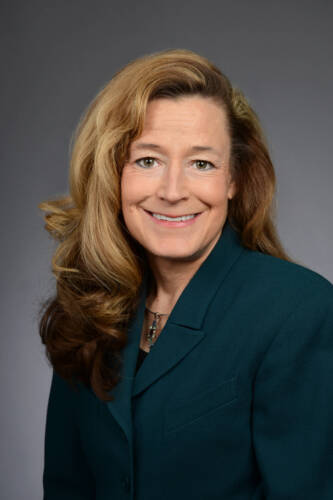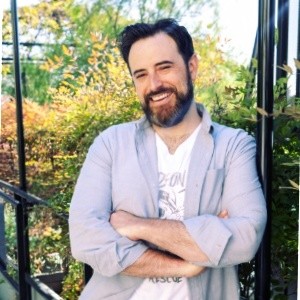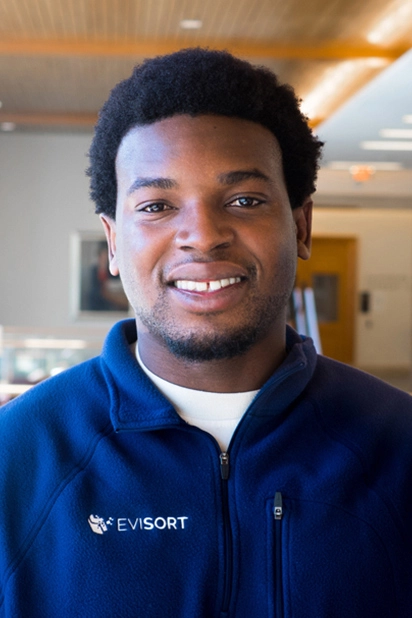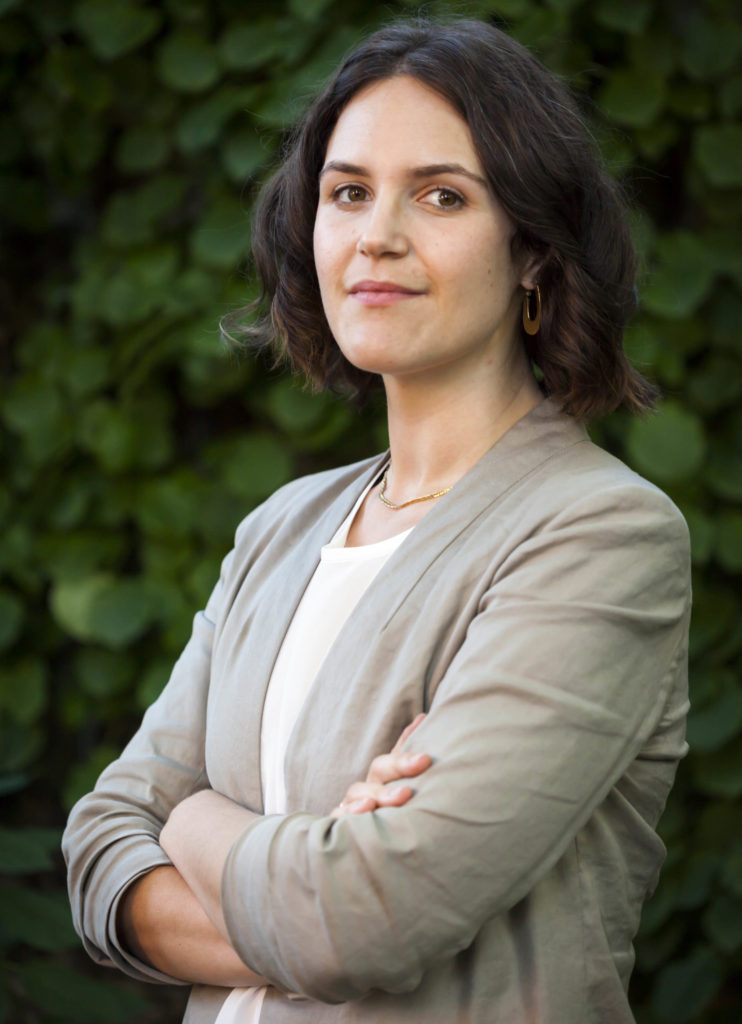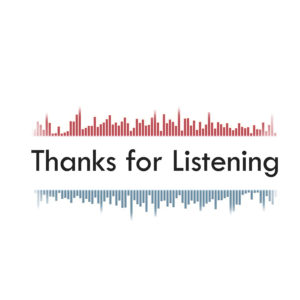
Welcome to the sixth episode of our podcast, Thanks for Listening!
What can communities do to bridge divides and address simmering tensions before they boil over? Our guests on this episode, Becky Monroe and Bill Froelich, ask this question each day in their work at the Divided Community Project, based at the Moritz College of Law at Ohio State University. As we heard in Episode 3, facilitated dialogue helped communities in MN heal in the traumatic aftermath of the killing of Philando Castile. The Divided Community Project supports communities seeking to reach across divides and engage tension before it boils over, and builds their capacity to engage when a crisis does erupt. Join us in this episode as Becky and Bill describe the origins of the Divided Community Project, the challenges of surfacing underlying and long-standing tensions, and how they engage with communities to “listen for the divide.”
![]()
Thanks for Listening is a podcast tracking efforts to bridge the political divide in the U.S. through dialogue and collaborative processes and spotlighting the important and often courageous work of individuals and organizations who are helping citizens engage with one another on challenging topics. Episodes will dive deep into such issues as: managing difficult family dynamics and relationships affected by partisan differences; bridging the divides in Congress, the media, and in our social media spaces; training youth to move through conflict and toward civic responsibility; embracing dialogue in the face of extremism; engaging with others on highly emotional issues; and on working to restore divided communities. We hope that through the everyday examples of ordinary and extraordinary people all over the country, listeners will find optimism that we can—and are—moving beyond partisan divides, as well as inspiration to become part of the solution. This podcast is made possible with a grant from the American Arbitration Association International Centre for Dispute Resolution Foundation.
Hosts
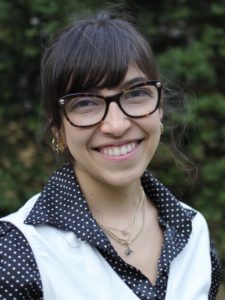
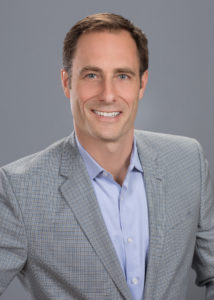
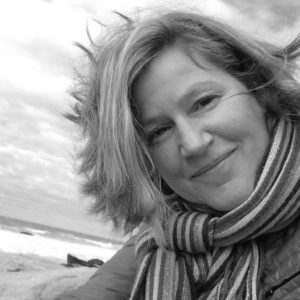
Sara del Nido Budish Neil McGaraghan Kate Ellis
Host Host Producer
Resources
Midland Simulation – General Facts 2020
Guests
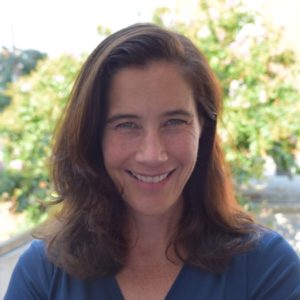 Becky Monroe is the Director of the Divided Community Project. She came to the Project with a depth of experience supporting communities in conflict, having served as Counsel and as Interim Director of the Department of Justice’s (DOJ) Community Relations Service, with the DOJ’s Civil Rights Division, as a Senior Policy Advisor to the White House Domestic Policy Council, and as the Director of the Stop Hate Project at the Lawyers’ Committee for Civil Rights Under Law.
Becky Monroe is the Director of the Divided Community Project. She came to the Project with a depth of experience supporting communities in conflict, having served as Counsel and as Interim Director of the Department of Justice’s (DOJ) Community Relations Service, with the DOJ’s Civil Rights Division, as a Senior Policy Advisor to the White House Domestic Policy Council, and as the Director of the Stop Hate Project at the Lawyers’ Committee for Civil Rights Under Law.
Ms. Monroe has extensive experience working with advocates, community leaders, and law enforcement. With the Stop Hate Project Ms. Monroe led innovative legal and advocacy partnerships to support communities in the face of hate, connected thousands of communities across the country, and developed and implemented a collaborative training initiative for law enforcement leaders. While at the Community Relations Service, she led an agency with 10 regional offices and 4 field offices in implementation of an expanded statutory mandate empowering an unprecedented number of communities to prevent and more effectively respond to violent hate crimes and civil unrest. She worked with law enforcement and local government officials, community leaders, and federal agencies to support those leaders in addressing tension associated with allegations of discrimination on the basis of race, color, and national origin, and helping communities develop the capacity to more effectively prevent and respond to civil unrest and violent hate crimes committed on the basis of actual or perceived race, color, national origin, gender, gender identity, sexual orientation, religion, or disability.
A graduate of Yale Law School, Ms. Monroe was a clerk for the U.S. Court of Appeals for the Ninth Circuit. Concurrent to her work with DCP, Ms. Monroe will serve The Ohio State University’s Moritz College of Law as a Distinguished Practitioner in Residence and Adjunct Professor where she will teach two classes related to the work of the Project.
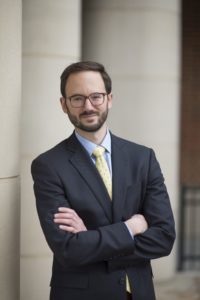
William Froehlich is the Deputy Director of the Divided Community Project and the Langdon Fellow in Dispute Resolution at The Ohio State University Moritz College of Law where he teaches mediation, negotiation and alternative dispute resolution and manages Moritz’s top-ranked Program on Dispute Resolution. Froehlich has worked on public policy consensus building projects with the Election Law @ Moritz program, and has conducted research in the areas of nonprofit law and professional responsibility. Prior to commencing the fellowship, Froehlich worked in labor relations and practiced labor law as an associate attorney with Muskovitz & Lemmerbrock, LLC. Prior to law school, he worked as a legislative aide in the Ohio Senate.
A former labor attorney, Bill has served as an advocate in mediation, arbitration and other dispute resolution forums. Bill has an undergraduate degree in math and political science from Denison University and earned his J.D. from The Ohio State University, Moritz College of Law.
Transcript
Sara [00:00:10] From the Harvard Negotiation and Mediation Clinical program, I’m Sara Del Nido Budish.
Neil [00:00:14] I’m Neil McGaraghan. And this is “Thanks for Listening,” a podcast about bridging the political divide in America. You may recall an episode we did awhile back about a series of community dialogs that took place in the wake of the police killing of Philando Castile during a traffic stop in Falcon Heights, Minnesota. Our guests on that show, Sharon Press and John Thompson, shared their stories about those dialogues–Sharon is one of the organizers, and John, as a participant. As a committed activist. John was skeptical at first of the Falcon Heights dialogs until one of Sharon’s colleagues persuaded him to at least give one session a try. It turned out that the choice to participate was the start of a paradigm shift for John about the value and the potential of dialogue and perspective-sharing to be a source of healing and connection. And in that same Falcon Heights episode, Sharon Press shared some thought-provoking insights about the challenges of making dialogue an effective tool to heal divided communities after crisis erupts, when the wounds are so raw and so exposed and the gulf between us and them feels too wide. She and John both spoke about the forces working against dialogue and against connection in Falcon Heights under those circumstances. And the process emphasized that as important as it is to engage conflict and divides that become so much more apparent after a traumatic triggering event, there is a need and an opportunity to work with communities to address really deep fault lines and conflict that exist before a triggering event like that leads to civil unrest is, you know, to strengthen relationships and build a framework and a foundation for communities to respond better when a crisis that has existed just beneath the surface eventually boils over.
Sara [00:01:54] In the past two episodes, we’ve seen a couple of different approaches to answering these kinds of questions. Ben Fink in Roadside Theater challenged communities to think about how to create together as a way of strengthening connections despite underlying differences. Gwen Johnson and Paula Green shared their experience with Hands Across the Hills, which is an effort to build relationships that run deeper than people’s starkly different political views. Our guests on this episode are wrestling with these questions in a different way. Bill Froehlich and Becky Monroe run the Divided Community Project at the Ohio State University’s Moritz College of Law. We caught up with them and have excerpted here some highlights of a fascinating and wide ranging conversation about the inspiration for the project and how they think about the challenges and opportunities of getting communities to focus on, as they beautifully framed it, listening for the divide just by way of brief background about Bill and Becky. Both have deep experience as dispute resolution professionals and are on the faculty and teach at Moritz College of Law. Bill is the Langdon Fellow in Dispute rresolution there and the Deputy Director of the Divine Community Project. Becky, is the Director of the Divide to Community Project and is a distinguished practitioner in residence at Moritz. We asked them both what drew them to the Divided Community Project. Here’s Bill.
Bill Froehlich [00:03:09] I’m working with the Divided Community Project because I believe it’s a great opportunity to support communities as they strive to develop resiliency so they can respond to social crises in a way that the community as a whole is better off to address division that tears at the social fabric of that community.
Sara [00:03:27] And Becky, what about you? You have a lengthy career in civil rights work. You started at the Department of Justice. You worked at the White House and most recently at the Lawyers Committee for Civil Rights Under the Law, mostly with communities in crisis and conflict because of issues of race, national origin, et cetera. So how did your work as a civil rights lawyer lead you to the Divided Community Project?
Becky Monroe [00:03:47] I think I saw that there was such a critical role both for litigation–and I think litigation definitely has its place–but also recognizing that in terms of sustainable change, what I really saw make a difference was when communities were treated with the respect that they had earned and were engaged in the process throughout. So that if you really wanted to see sustainable change in a community, it would not only be through litigation, but that it would necessarily be through very active community engagement. So that’s, you know, I thought the Divided Community Project gave me this opportunity to work with communities around the country and kind of came back to that core principle of respecting the fact that the wisdom to address some of the most challenging issues in our country really resides in the people who are often the most affected by those issues. And so that if we can introduce a process that supports their leadership, that we we would help be able to support people in the, in communities across the country to to make the kind of change they want to see.
Neil [00:04:48] Yeah. Well, and looking at communities around the country, you know, one of the things that inspired us to want to know more about the Divided Community Project was an episode we did about the tragedy in Falcon Heights. I’m sure you recall Philando Castile was shot and killed by the police and that was a really traumatic event for that community. And it was just one example, among many dozens, in which a community was pushed past its breaking point. And, you know, looking back at the recent history in the United States, with so many examples like that, how does it frame up where you all are now and how you look at the work you’re doing? Is it an inspiration for you and the work you’re doing at the Divided Community Project?
Bill Froehlich [00:05:25] Certainly that’s the inspiration for it. Josh Stolberg and Nancy Rogers, two faculty here at Moritz, asked this question shortly after Trayvon Martin was killed in Sanford, Florida, tragically by George Zimmerman, a neighborhood watch volunteer. Or they looked at the community in Sanford and said, what can dispute resolution offer communities in crisis? And looked at some of the work that Beckey was doing at CRS, at the Community Relations Service at the time in Sanford, Florida, for inspiration for our field and for the divided community project.
Neil [00:06:01] Well, and so, Becky, how about that? I mean, from your perspective, where, you know, you were doing a lot of this work and in this field before you got to the Divided Community Project. What were you observing over the last nearly decade as one after the other incident happens and you’ve got communities around the country that are really dealing with serious and severe reaction and responses to acute pain and trauma in their communities.
Becky Monroe [00:06:24] Yes. I think, you know, one of the things that I really valued about the way that Nancy and Josh approached this question is that they recognized that civil unrest and protest is something that’s actually really essential to our democracy. And so when we’re talking about not looking at civil unrest and protest in response to injustice and in response to, as you mentioned, acute pain and suffering in communities, the idea of using dispute system design and using mediation principles was not that we were going to prevent civil unrest. Rather, we recognized that it played a critical role in democracy. But the question was, how do you sort of help keep people safe in the short term thinking about these issues around civil unrest, but then really use them as an opportunity to pivot to address the longer term issues that may underlie those crises. And so one of the things I saw as being there on the ground in the in the short term after Trayvon Martin was killed and as the community was grappling with with, again, just unspeakable pain, the family, people coming into Sanford…. You know, I think the city of Sanford, its population almost doubled with people coming to protest and to march and to speak about issues that were not only coming to the fore because of this horrific, tragic death and murder, but also because there were issues that were underlying the tension there. But then really also start to think we have an obligation here as we see this kind of suffering to start thinking about what are some of the underlying issues that are continuing to drive this tension in Sanford. And they looked at issues around people being concerned that certain services were only being provided to certain parts of the community so that, for example, African-American neighborhoods felt like they weren’t getting the same kinds of services. Concerns around opportunities for young people of color in the area. Concerns about the history of the area and the way it was playing out. And and then saying, OK, so we need to start thinking about how do we address those issues. And so I think in Sanford, they ended up, you know, not only grappling with it, but developing a nine point plan to enhance the unity in the city. So, you know, I think in some ways, Sanford is an example of sort of what we look at at the Divided Community Project as the way that communities can both, again, keep people safe in the short term, respect the need and the important role that civil unrest plays in the community, but then turn to addressing some of the underlying issues that are affecting, you know, any community in this country and and recognize it that you can bring these mediation principles, these disputes system design principles to the work in a way that allows the community to have, that allows cities to respect the power of the people in the community.
Sara [00:09:09] So you mentioned dispute systems design principles. What are the core principles of of your work of the Divided Community Project and how do you put them into practice in the projects that you do?
Bill Froehlich [00:09:19] It really starts from the founding of the project, bringing together stakeholders and conducting an assessment of how we might move forward. The first convening of the Divided Community Project was almost five years ago in 2015, and it convened folks from Sanford, as well as advocacy leaders, public officials–including police officials and other former elected or appointed officials–Individuals experienced in conducting mediations and divided communities, as well as researchers and legal leaders from across the country who have been experienced and exposed to addressing these issues. That is the starting point for all of our design processes. Conducting an assessment, identifying stakeholders that should be involved in the room, not just stakeholders who are elected officials or appointed officials or police chiefs or nonprofit leaders, but also those gatekeepers, those informal leaders and communities that might be able to connect with residents to identify the pulse of the community so that the Divided Community Project can help communities be proactive in identifying and addressing the issues that really tear at the fabric of their communities, so that those issues don’t boil over. Those issues don’t spark when there is a police involved in shooting or another, for lack of a better word, triggering event that sparks protests and unrest. Where CRS in Sanford was helping Sanford react to the unrest and protests that was sparked by Trayvon Martin, Becky described so many simmering and underlying divisions and tensions. And so we think that if you bring stakeholders together, conduct an assessment and try to identify some processes to identify and address some of the divisive issues in communities that perhaps communities can do something about those divisions in advance, that perhaps communities can set up processes for simply identifying those issues. And when there is a crisis in the community, through those processes, relationships will be enhanced so that at a minimum, community can respond more resiliently and more effectively to the issue that sparked that division.
Sara [00:11:45] So for those communities that you’ve worked with, what is your entry point there? You know, how do you initiate that project of working with the stakeholders? For one thing, I imagine that there are different levels of reception and openness, even within the same community.
Becky Monroe [00:12:00] Yeah, I think those are those are all great questions and ones that we’re actually, you know, continuing to sort of develop our own our own ways of responding to some of those challenges. So, for example, we are right now working in a sort of mid-sized city where they’ve had some tension connected to white supremacists and in the community, and allegations that people are connected to white supremacists, and sort of it’s brought a lot of tension, both connected to the person who’s alleged to be to have those ties as well as to the sort of broader community. So, you know, one of the things we, you know, there in terms of getting people to the table, one of the challenges is that you may, you know, first identify the people who are directly connected to the to the controversy. So the people who maybe have to work around that person who, you know, it’s a public setting. So there are others sort of that are connected to that to the issue at hand. But then also recognizing that it brings up issues in a community that are not new. So, you know, if you’re talking about a community where the Klan has been active for generations, the issue that may be coming up may not be directly related to them. But then you need to recognize there are people who are affected that may not be sort of directly present in the immediate conflict. So in that example, the mayor reached out and said, look, this is something that my city is going through. I know that it is both directed to this immediate conflict, related to this alleged connection to white supremacists and the conflict that’s sort of come up around it. But we also know that it’s touching on issues that are not new for our community, for our state, for our region or for our country. And so, you know, in that way, the other person was familiar a little bit with the project and with the work and was open to thinking about these issues. You know, the next challenge came with we were working with the mediator who kind of went out and started talking to people in the community. And there the challenge was, how do you get people at the table, not just the people who are the head of the local community organizations? So the NAACP, Urban League, other civil rights groups and community organizations. City officials. How do you get people who clearly have an important role in their community but don’t have a title? And so that’s one of the things we did there in the first instance. We’ve certainly we talked to the city. We we made sure we talk to people who worked for the city when these issues happen and especially if the city government is involved. Sometimes people forget that city employees who are dealing day to day with the trauma of an event. They also have an important perspective to share. So we talk to them. We we ask them about the leaders they would identify. And then when we start talking leaders in the community, we said, who’s not here? Who’s not at the table, who are we missing? And I think, you know, I think from a dispute system designs perspective, this is something that is a huge challenge at all times, is making sure you really have, you know, all of the stakeholders at the table that need to be there. We try to build into the process a way to make sure that we are always asking ourselves that question, you know, who’s not here, at every stage that we can try and be as inclusive as possible. I would just say the shorthand way we describe sort of how we work with communities or how we start to work with communities is that we go where our services are requested or accepted. You know, obviously we’re just a, we only want to go where our services are useful. And so I have had many conversations with leaders, community leaders, as well as government leaders who acknowledge that they had some tension, they just weren’t in the place where they were ready to have have support from the outside. And so I think it’s really critical to respect that and just recognize that we go where people are ready.
Neil [00:15:35] What does that mean? To not be in a place to be prepared to engage in that kind of work?
Becky Monroe [00:15:40] Well, I think, you know, and I think sometimes they are prepared to engage in that kind of work, but just not with us. So maybe they’ve got local capacity. I mean, one of the things we always ask when we go into community is get a sense, are there people that are there that can do this kind of work? So are there local community mediation centers that have experience and working with broader community conflict? And sometimes so sometimes it’s just that they think they do have the local resources. Other times, I think, you know, it’s just a question of sort of, one of the things we talk about is that it’s really critical to build relationships of trust with with community leaders before a crisis occurs. You know, and I think obviously that can’t always happen. Sometimes you build it afterwards and that’s where you are. But sometimes the people in the midst of a crisis, maybe they’re in the midst of building those relationships that they think would be necessary for them to engage in that kind of work. And they want to try and build those. And then they think they’re making some progress, in which case they should, you know, certainly move forward with that. And then at a later stage, they may say, you know, we have strengthened some these relationships. If we could have an outside person come facilitates in these conversations, it would be helpful to us.
Neil [00:16:45] So the Divided Community Project, of course, is situated within a law school. Are there benefits and maybe also challenges or risks in the work that you do that stem from that affiliation with the law school?
Becky Monroe [00:16:58] Yeah, you know, I think about that in a few different ways. So one is, I think, you know, we’ve mentioned a little bit we’ve got the reports that we brought in people to develop. And again, they’re as practical and user friendly as possible. They are really intended to help leaders when they’re in the midst of these different crises. But another way we do this work, we call it the Bridge Initiatives as another sort of, in a sort of tool box that we have, one is this Bridge Initiative, which is where we actually do send out mediators and some of those mediators are people who have absolutely no academic affiliation absent their connection to us. So, for example, we work with former police chief, former mayor, former head of the Urban League. People who also are trained mediators. So in that context, it’s interesting because they don’t have the academic, they’ve never really worked in an academic setting outside of this connection with us. And so they’re we kind of you know, we hope we can kind of offer that the best of both worlds. But another way I think about it, I was just working in last week with two mediators as well as, actually, a group of students in a part of Appalachia where we were working around issues around the opioid crisis and sort of how the tension between the different parties that respond to the opiod crisis in that community. And one of the things that we felt like it was important for us to say and to reiterate was that, yes, we were connected to a university, but we were not there to study nor to research. We were there we were there to offer a service. And if it was useful, that’s great. And if not, then that’s great as well. So I you know, I think there’s the benefits of having access to this research has already been completed. But also access to students who are bring their own energy perspective and thoughts on these issues. And I, you know, there are also challenges because people make certain assumptions. And if you’re coming in from university, you’re coming to do one thing, and one thing only, which is to sort of study them, which is, of course not, that’s not our role.
Neil [00:18:56] Well, and I’m I’m really glad that you mentioned your students, because one thing we’ve been did ask you about is a simulation exercise that you use at the Divided Community Project that was developed by a woman who was actually a student of yours at the time, Jackie Fisher. And I know you call it the Midlands simulation, which sets up a fictional community that’s dealing with high-tension conflicts surrounding immigration. I think you’ve set it up with a local news outlet that sharing fake information about the cost of immigrants, video of a Midland High School students bullying a Muslim classmate that goes viral. Yhere’s a local elected official that’s railing against immigrants. In any case, a fictional community in one sense, but drawn from incidents and dynamics that are we know are occurring throughout the U.S. today. So you run this simulation with community leaders, activists, police, first responders, city officials, where they try to develop a plan to respond to this brewing situation. And then afterwards they have a debriefing session to draw lessons from their experience and the exercise. What can you share with us about some of the impacts that you’ve seen in communities where you’ve been able to use this tool?
Bill Froehlich [00:19:59] It’s a point of entry so that we can help communities think through some of the ideas and concepts we’ve laid out in the Divided Community Project reports, like expanding who they’re communicating with in advance of a crisis, developing processes where they can better listen to and identify divisions in their community. Becky and I were just running the simulation in October in cities surrounding Oklahoma City. So we ran the simulation in Midwest City, which is a suburb in Oklahoma, as well as in Norman, Oklahoma, I’m sorry, University of Oklahoma is based and we’ve used that as a entry point: one, to ask city leaders from and advocacy leaders from about eight jurisdictions and the Oklahoma City area, to think through how they connect with stakeholders, what plans they have in place in advance of civil unrest, not plans that the police department has, but plans communities of hope have. So who might the police contact and the advocacy community when there is a social crisis? Who might be advocates contact in the city infrastructure to get support for their communities so that their issues can be addressed in advance of a social crisis? And so we use this as a as a point of entry in communities to help them begin thinking and to say say to those communities that we offer other services like the Bridge Initiative, and we have other toolkits through our case studies and reports that they might take a look at and they might implement and in their communities.
Becky Monroe [00:21:38] And I would I would just say that’s one of the reasons that I think that it’s an attractive, and potentially attractive, tool for communities and also a way to sort of think about some of these issues in some of these practices around mediation techniques and dispute resolution techniques is that it’s a very concrete, very practical exercise so . . . and it’s pretty low stakes in that you’re doing a simulation and you’re doing a tabletop exercise. But it’s also feels very real and you can walk away with very concrete steps, you know. In this simulation, we looked through these issuesm, “We didn’t have this and this is something we can develop.” And we’ve heard that in the aftermath, you know, when we’ve kind of gone through the debrief of these simulations. People will say, you know, we’ve got a plan for if there’s natural disaster, we have a plan for, you know, if if there’s a shooter. But we haven’t really developed a plan for something, you know, for kind of responding effectively to to unrest in this way. And that’s something we can do. But it also emphasizes in order to do that, you have to have those relationships in place. And so it necessarily requires that people think through that, big issues of developing those relationships. And I think in particular in getting all the different parties to the table. So, for example, we will have, in the last one we did, we had police chiefs, we had people from the fire department, we had local community leaders, civil rights leaders, and then other sort of city employees. There’s something in the simulation that allows everyone to kind of feel comfortable coming to the table. Most law enforcement officials are comfortable coming to the table to do a tabletop exercise. They often do them in order to prepare for other events.
Bill Froehlich [00:23:19] Let me just add, Becky, that one of the items that I love seeing in the simulation is when we have the nonprofit and advocacy leaders in the room with the police and the city staff and they switch roles. So in the simulation, you have a advocate, a community organizer playing the police chief and you have the deputy police chief playing the community organizer. And they get to see how this a social crisis unfolds from a different months. And I think they walk away with that with significant value, having a better understanding for some of the pressures people on the other side of the protest might be facing and a better understanding about how they might work more effectively and more collaboratively in the future.
Neil [00:24:06] So the simulation can be and has been for you all, a really important entry point into communities to start working with folks, to get them thinking about building relationships, preparing for when underlying crises do erupt. But, you know, the work can’t stop just there. I know, you go on. And one of the projects that you feature on your Web site and we’ve learned a little bit about, and we’d love to hear more from you, it’s called Orlando Speaks based, of course, in Orlando, Florida. Can you tell us a little bit about that initiative, how it came about and how it worked?
Bill Froehlich [00:24:37] Valencia College has a Peace and justice institute that was working with the Orlando Police Department and the Orlando Mayor’s Office to develop this Orlando Speaks set of community sessions between the police department and the city leaders and residents of those communities. And the really interesting thing about this project is, is it was really thoughtfully developed as a way to convene residents and police officials. Not to have a panel session where police present information or residents get frustrated with police, but instead to have small group conversations where one police officer sits with three to five residents and the local community and they connect with one another. They have meaningful conversations about what their hopes and fears are for the community facilitated by Valencia’s facilitators. And one of the great stories about this program that I really love that was highlighted in the local Orlando newspaper as it is about a protester who was protesting the first Orlando Speaks conversation. And the point of her group’s protest was that the Orlando Speaks conversations weren’t going far enough. And I believe that one of the facilitators walked out of the first Orlando speak session and said, you know, our door’s open. We’d love to have you become a part of this conversation because we want to hear your voice. We want your voice in the room. And many of the protesters did go into the first Orlando Speaks session and engaged in the first conversations and then brought others to the follow-up conversations, including a woman whose son was tragically killed by a police officer in the Orlando jurisdiction who left in Orlando Speaks session saying that, quote, she found love in the room. She found compassion. She found a lot of officers who have pain, too, just like she does. So this is a such a clear example of how the value of conversation can build empathy, can build relationships even for individuals who who have suffered such traumatic and tragic events in their community, and a value of Orlando Speaks conversations.
Sara [00:27:01] I’m really struck by that story of one of the facilitators in Orlando Speaks sort of welcoming a protester in and saying the door is open. And it kind of strikes me that that’s a function that the Divided Community Project serves. You’re a door for communities and for stakeholders in communities to try something new and try something different proactively and in response to social crisis. As we close today, I wonder if you can give us a sense of kind of what’s next? What are what can you give us an example of a new initiative that you’re working on now and that you’re excited about?
Becky Monroe [00:27:33] Sure. So, you know, we, for the next year or so, we have identified a few priorities. And among them is sort of recognizing some of the building tension with the election in 2020. And and one of the places that we’ve identified that that may need additional and special support, are college campuses. So we’ve been talking to a lot of different leaders on campuses, including administrators who have dealt with issues around when controversial speakers come to campus. How do you think about issues around the First Amendment? Around sort of protecting the free exchange of ideas? But also keeping the campus to be a safe place for all students and sort of grappling with some of those issues? So we’ve been thinking about how do we bring some of these principles to that to that context. And honestly, one of the things that’s really great about this project is that every time we go into a community, whether it’s to do a tabletop exercise or through the Bridge Initiative, we learn about a new area that we should be thinking about or a new opportunity to get more people engaged. So one of the nice things is that we do have some flexibility to to be responsive to what we’re seeing in communities around opportunities.
Sara [00:28:43] For Neil and me as as academics and practitioners, too, but hopefully also for our listeners as well, there’s so many projects that you’re working on and in so many communities, that’s just really exciting. So thank you so much for taking the time to share it with us.
Neil [00:28:58] Yeah. Thank you both. It’s been really great hearing what you’re up to and what you’ve been thinking through and how you’re applying it in communities around the country.
Becky Monroe [00:29:06] Thank you so much. We really appreciate the opportunity.
Bill Froehlich [00:29:09] Absolutely. It was fun chatting with both of you.
Sara [00:29:22] The projects Bill and Becky talked about today are only a fraction of what the Divided Community Project is working on right now. You can find all their case studies, reports for practitioners, and information about other initiatives on their website at moritzlaw.osu.edu/dividedcommunityproject/ and they encourage everyone to check them out. The Divide Community Project is supported in part by grants from the American Arbitration Association’s International Center for Dispute Resolution, which also supports this podcast. You also can visit our website, HNMCP.law.harvard.edu/podcast. You’ll find there links to the Divided Community Project website materials for today’s show and a full transcript of this episode and past episodes. As we round out the 10 episode series in our podcast on political divides in America, we’re still really interested in hearing from you with your thoughts and questions. Reach out to us if you know of an individual or group who’s working to bridge the divide. Send us an email at [email protected] or find us on Twitter @HNMCP. We’d love to hear from you.
Neil [00:30:31] We are grateful for the help and support of our colleagues at the Harvard Negotiation and Mediation Clinical Program, especially Tracy Blanchard and Bria Etienne. Thank you to Kate Ellis, our producer, and to the folks at the Harvard Media Production Center, where we do our recording. Theme music is made available to us courtesy of Blue Dot Sessions, and this podcast was made possible by a grant from the American Arbitration Association’s International Center for Dispute Resolution Foundation.
Neil [00:30:55] You’ll hear us again soon on our next episode.
Sara [00:30:58] Thanks for listening.
Neil [00:30:59] Yup. Thanks for listening.

